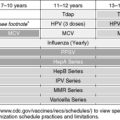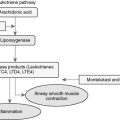CHAPTER 27 Nutrition
I. Definition
A. Nutrition is the provision of the materials necessary to nourish the body and sustain life (Box 27-1).
IV. Parenteral Nutrition
A. Parenteral nutrition is the use of intravenous nutrients. Patients with a nonfunctioning gastrointestinal tract receive therapy to ensure they are adequately nourished.
F. TPN components
H. Complications
3. Metabolic
f. Electrolyte imbalances
2) Potassium, normal = 3.5–5.0 mEq/L
Box 27-1 2005 Focus Areas of the Dietary Guidelines for Americans*
From the US Department of Health and Human Services, US Department of Agriculture: Dietary guidelines for Americans 2005: Key recommendations, Washington, DC, 2005, Authors. Retrieved March 22, 2006, from www.health.gov/dietaryguidelines/dga2005/recommendations.htm.)
1. Adequate Nutrients within Calorie Needs
2. Weight Management
3. Physical Activity
4. Food Groups to Encourage
• Consume a sufficient amount of fruits and vegetables while staying within energy needs. Two cups of fruit and 2½ cups of vegetables per day are recommended for a reference 2000-calorie intake, with higher or lower amounts depending on the calorie level.
• Choose a variety of fruits and vegetables each day. In particular, select from all five vegetable subgroups (dark green, orange, legumes, starchy vegetables, and other vegetables) several times a week.
5. Fats
• Consume less than 10% of calories from saturated fatty acids and less than 300 mg/day of cholesterol, and keep trans fatty acid consumption as low as possible.
• Keep total fat intake between 20% and 35% of calories, with most fats coming from sources of polyunsaturated and monounsaturated fatty acids, such as fish, nuts, and vegetable oils.
6. Carbohydrates
8. Alcoholic Beverages
• Those who choose to drink alcoholic beverages should do so sensibly and in moderation—defined as the consumption of up to one drink per day for women and up to two drinks per day for men.
• Alcoholic beverages should not be consumed by some individuals, including those who cannot restrict their alcohol intake; women of childbearing age who may become pregnant, pregnant, and lactating women; children and adolescents; individuals taking medications that can interact with alcohol; and those with specific medical conditions.
REVIEW QUESTIONS
(Answers and Rationales on page 381.)
3. Which of the following is a possible complication of administering parenteral nutrition solutions?
6. Parenteral administration of 1 L of 10% dextrose in water provides the patient with approximately how many kcal of energy?
7. A nutritional product is said to contain 12 g of protein, 24 g of carbohydrate, and 6 g of fat in each 100-mL serving. What is the caloric content of a serving?
8. What caloric density value (kcal/g) should be used when calculating the amount of amino acids in infusion solutions?










